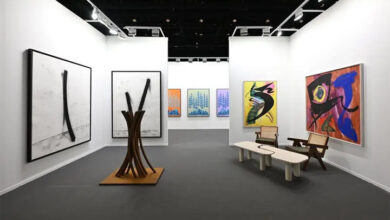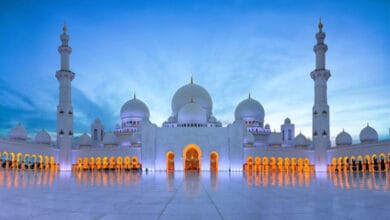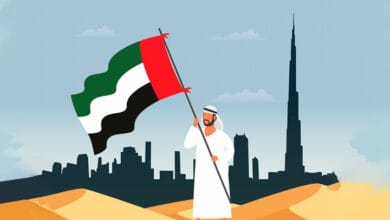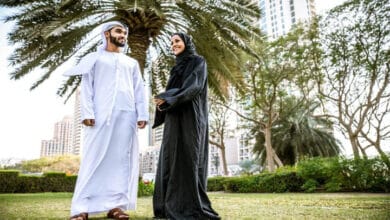Fascinating UAE Cultural Customs and Traditions: A Deep Dive into Heritage

The United Arab Emirates (UAE) is a nation where modernity and tradition walk hand in hand. The futuristic face and skyscrapers hide a society rich in heritage, one whose customs and values resonate centuries past. These, spurred on by Islam, Bedouin lifeways and local interactions, determine everything from the daily rhythms to national festivities. In the continuation of this article, we will take a comprehensive look into the customs and traditions that shape Emirati life.
Bedouin Origins and Nomadic Traditions
It is the Bedouin legacy that is at the core of UAE culture. Long before the formation of the UAE in 1971, the deserts used to roam Bedouin tribes depending on camels, date palms, and wells. Their way of life, characterized by toughness, generosity and close kinship, still influences current values.
Desert skills such as camel herding, star navigation, and survival in sand contributed to both physical survival and community spirit. These are preserved today by oral tradition, museums and desert festivals.
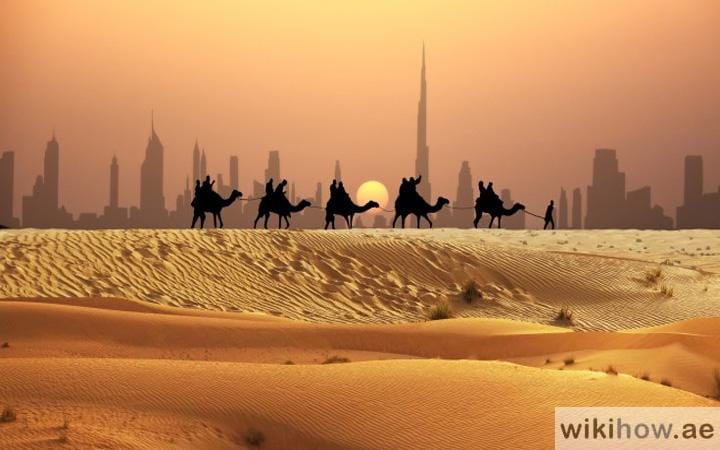
The Role of Islam in Daily Life
Islam is the conscience of Emirati society. From the call to prayer (adhan) ringing out in cities to the observance of Ramadan, religion pervades public and private life.
During Ramadan, for example, Muslims fast from dawn to dusk, eat meals like iftar and suhoor and do nighttime taraweeh prayers. Tourists and non-Muslims are expected to respect this holy month by dressing conservatively and avoiding eating in public areas during the day, as part of the broader Religious Practices in UAE that shape cultural and social life.
Family and Social Structure
Family is the very base of Emirati culture. Families remain patriarchal with defined roles and a tremendous amount of respect shown to elders as well as tribe traditions. Extensive families do reside close by each other, and family decision-making takes place. Celebrations, education selection and weddings usually incorporate extended family members so that unity as well as a sense of belonging arises.
Hospitality and Generosity
Hospitality in the UAE is not a virtue it’s an expectation. Guests are welcomed with Arabic coffee (gahwa), which is poured into delicate cups and served with sweet dates.
The Majlis (guest sitting area) is where conversations flow, and wisdom is shared. Receiving with food, sharing stories and taking the time for guests demonstrate the warm-heartedness of the Emiratis.

Modesty and Traditional Dress
UAE fashion is symbolic of modesty, tradition and identity. The Kandura, which is a long white cotton robe, and the headscarf Ghutra or Shemagh tied around the head with an Agal, are traditionally worn by Emirati men. Abaya, a long black cloak, and Shayla, a modest and fashionable headscarf, are commonly worn by women.
These garments are not only religious symbols but are also designed to provide comfort in the harsh desert environment while preserving cultural pride. Understanding these traditional outfits is essential for anyone visiting or living in the UAE, especially since they reflect broader cultural expectations. To learn how these values influence appropriate clothing choices, see the full Dress Code in UAE for Tourists and Residents guide.
Emirati Cuisine
Emirati cuisine prides itself on a reflection of the sea and desert history of the country. Lending towards Persian, Indian and African cuisines, ingredients such as dates, rice, lamb and sea fish are blended into local food.
Traditional Emirati food include:
- Al Harees: wheat and meat dish cooked slowly
- Al Majboos: spiced meat and saffron rice
- Balaleet: eggs with sweet vermicelli
- Luqaimat: date syrup-topped sweet fried dumplings
Food in culinary form is crucial to hospitality, especially during holiday seasons like Eid and weddings.
Marriage and Wedding Traditions
Marriage is a significant institution within Emirati society, often arranged with the involvement of families. Courtship follows traditional form, and when the match has been agreed upon, the wedding festivities may last for days.
The Henna night, usually held before the wedding, is a celebratory event during which the bride’s hands and feet are intricately decorated with henna designs. The wedding ceremony is a traditional affair featuring music, dance and feasting and one that serves to highlight the depth of community and family bonds.
Architecture and Urban Impact
Traditional Emirati architecture is exemplified by wind towers (Barjeel), coral-stone structures, and narrow alleys for ventilation and shade. Such structures, as in heritage villages like Al Fahidi in Dubai, bear witness to sustainable design.
As cities developed, architectural innovation merged with tradition, as in such icons as the Sheikh Zayed Grand Mosque and Qasr Al Watan. Such structures combine Islamic art with modern materials, preserving identity during periods of rapid development.
Language and Oral Traditions
Arabic is the national language of the UAE, and its dialect represents the identity of the country. Emirati traditions are stories, poetry and proverbs in which they take pride.
Nabati is a poetic form that talks about the usual love, heroism and patriotism. Generation by generation, stories and words were transmitted to be the core of cultural continuity.
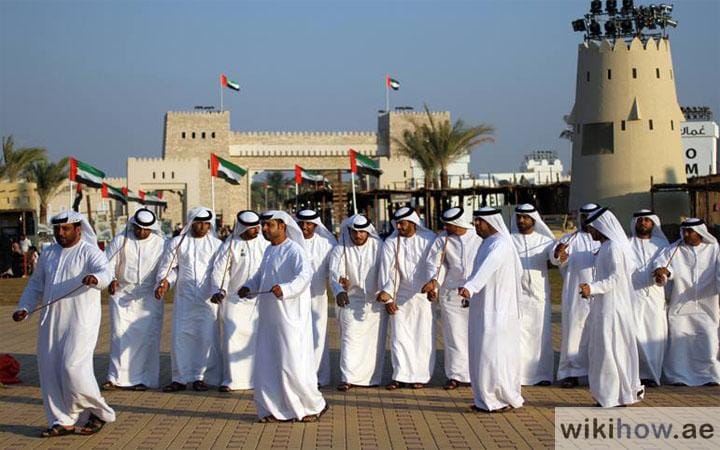
Festivals and Celebrations
The UAE has a number of significant festivals that are celebrated:
- National Day (Dec 2): is to commemorate the unification of the Emirates in 1971
- Eid Al Fitr: is the feast of Ramadan ending
- Eid Al Adha: commemorates Abraham’s obedience to sacrifice
These celebrations include prayer, reunions with family, new clothes, charity and fireworks. Streets and buildings are decorated, indicating unity and community spirit. Many of these events form part of the broader spectrum of Cultural festivals in UAE, reflecting the deep-rooted traditions, religious values and shared cultural identity of the Emirati people.
Camel Racing and Falconry
Falconry and camel racing are deeply rooted in Bedouin tradition. Camels once were essential for transportation and trade and camel racing evolved as a sport with high-tech tracks and robot jockeys. Falconry, now recognized as a UNESCO heritage, underscores man’s rapport with falcons. Falcons are prized and trained for hunting, and they are usually treated as members of the family and even have their own passports.
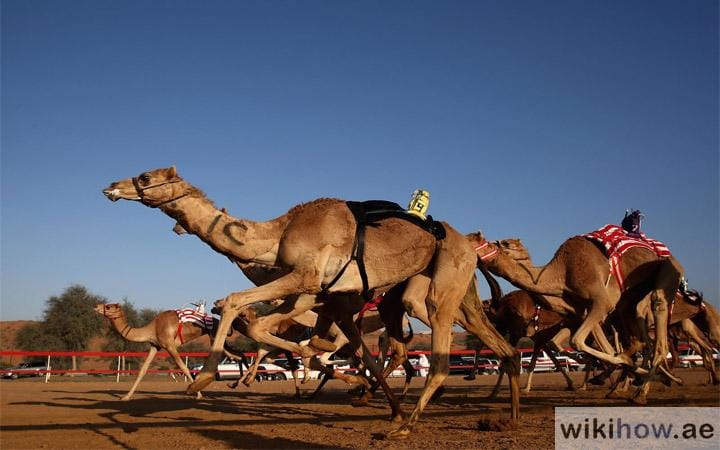
Art and Crafts
Emirati craftsmen retain ancient arts:
- Sadu weaving: geometric textile art of Bedouin women
- Pottery and basket work
- Talli: elaborate embroidery with silver and gold threads
Cultural events, museums and government initiatives ensure the survival of these arts, promoting tourism as well as retaining heritage.
Effect of Modernization on Traditions
In spite of modernization, the UAE is actively working to preserve its culture. Heritage is taught in schools, cultural villages promote traditions and national policy invites young people to remain attached to their heritage. Still, there are challenges. Global culture and technology influx need ongoing effort to harmonize modernity and tradition.
Conclusion
The UAE’s cultural traditions and customs are a living blend of the past and present. Strongly based on Bedouin culture, Islamic values and family ties, Emirati tradition continues to shape the country’s identity in spite of globalization. For those who desire to look beyond the UAE’s skylines, embracing its tradition is opening the door to a world of hospitality, wisdom and pride.
Want to learn more about the UAE’s dynamic traditions, cosmopolitan culture and in-the-minute news? Visit WikiHow UAE Culture and News Hub for expert guides, in-the-minute updates, and expert advice that enlighten and motivate you whether planning a visit or simply curious about Emirati culture.
FAQs
1. What is the significance of hospitality in Emirati culture?
Hospitality is central to Emirati values, symbolizing generosity, respect and community bonding. Serving coffee and dates is a traditional welcome gesture.
2. Why do Emiratis wear traditional dresses like the Kandura and Abaya?
These garments reflect cultural identity, religious modesty, and are suited to the desert climate.
3. What are some traditional Emirati dishes?
Al Harees, Al Majboos, Balaleet and Luqaimat are popular dishes often served during celebrations.


